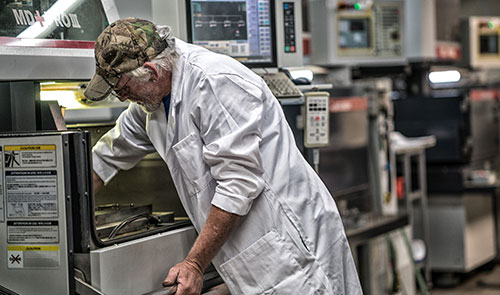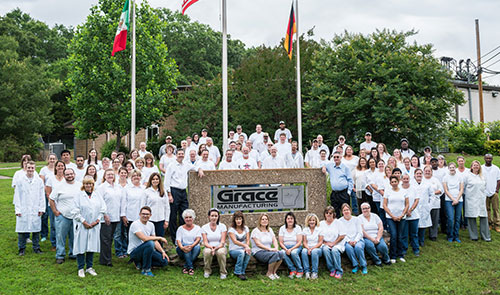


Our Story
Our Humble Beginnings
It was the 1940’s, Michigan native Louis Grace, a tool and die maker in Detroit, started a shop with his two brothers. As was the case for many families, the war came along and everything changed, the business closed and the brothers were forced to go their separate ways to provide for their families. Over the years Louis dreamed of restarting the business with his son Richard, but Richard felt the priesthood calling and headed to Boston to attend the seminary. After several years of study, Richard realized that he was more interested in airplanes and creating things than studying. He returned home to Michigan, pursued an engineering degree, and went into business with his father.
Soon after, Grace was hired to make a part for a computer printer company. “The part was very difficult to make, so we gave him a price of $6 each. He thought the price was ridiculous and felt we were trying to get rich on the job,” remembers Richard. However, after months of searching, the engineer was unable to find anyone willing or able to manufacture the part. He came back to the Graces and asked if the $6 price was still good. Grace Engineering was off and running.
By 1976, the booming printer industry was going through growing pains. Richard felt that many of the parts could be made more efficiently using a chemical etching process which would require different equipment and a specialized building.
Meanwhile, having grown tired of the long hard Michigan winters, Richard and his young family set off for the fairer climate of Arkansas. When asked how they learned the chemical etching process, Richard replied, “We bought the equipment and a book about it. It was a good thing we had no idea how difficult it was because we probably never would have done it!”
Soon laser printers came on the market and the parts Grace manufactured quickly became obsolete. However, Richard remained optimistic. He had seen many companies try to use the chemical etching concept to make cutting tools, but no one was able to develop a reliable manufacturing process. After several years of trial and error, they succeeded. Grace Manufacturing, as the company was now known, named their new line of woodworking tools Microplane®. The new tool was a success and Grace Manufacturing became world renowned for their quality craftsman tools. Then came that day when their first best-selling rasp accidentally turned into a kitchen grater.
With just a few modifications, and a slight change in their marketing plan, an entire new product line of graters for home cooks and professional chefs was introduced. The response was extraordinary. Since that time, Microplane® graters have distinguished themselves from other graters by using that patented chemical process to create ultra-sharp cutting edges. Unlike stamped graters, they effortlessly cut through hard and soft foods without tearing or shredding.
In 2002, Richard Grace retired and handed over the reins to his son, Chris Grace, who is the currently our president and CEO.
